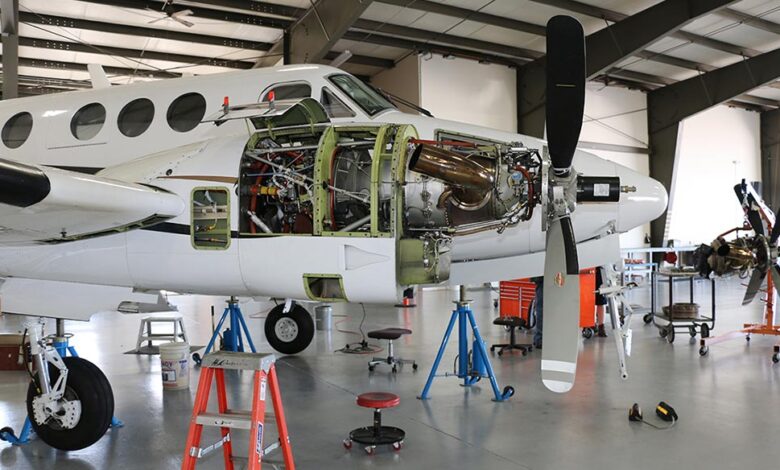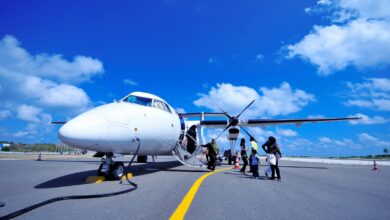Maintaining Airworthiness: How Aircraft Annual Inspections Keep Planes Flying Safely

Introduction: What is an Aircraft Annual Inspection?
An aircraft annual inspection is a comprehensive examination of an aircraft’s airworthiness conducted by certified aviation mechanics or inspectors. It is a crucial aspect of maintaining the safety and reliability of any aircraft, as it ensures that the plane complies with all necessary regulations and standards.
The Federal Aviation Administration (FAA) requires all registered aircraft to undergo an annual inspection, regardless of their type or usage. This includes commercial airliners, private planes, helicopters, and experimental or vintage aircraft. The purpose of this mandatory inspection is to identify any potential issues that could compromise the safety and performance of the plane.
During an annual inspection, every component and system of the aircraft is thoroughly checked for signs of wear and tear, damage, or malfunction. This may include but is not limited to engines, propellers/rotors, flight control systems, fuel tanks and lines, landing gear, electrical systems, avionics equipment, and more. Each item on the checklist must pass a series of tests to ensure it meets FAA standards.
The Importance of Regular Inspections for Airworthiness;
Regular inspections for airworthiness are a critical aspect of maintaining the safety and reliability of aircraft. These inspections ensure that an aircraft complies with all regulatory requirements and is safe to fly. Without regularly scheduled inspections, there is a risk of potential mechanical failures or issues going undetected, which can have serious consequences.
One of the main reasons regular inspections are so necessary is that they help prevent accidents and incidents. During an inspection, trained mechanics thoroughly review every aircraft component to check for any signs of wear or damage. They also inspect the documentation and maintenance records to ensure that all necessary repairs and updates have been completed. By catching any potential problems early on, essential repairs can be made before they escalate into significant safety concerns.
In addition to preventing accidents, regular inspections also help maintain an aircraft’s overall health and performance. Just like a car needs routine maintenance to run smoothly, airplanes require frequent checks to remain in optimal condition. Inspecting key components such as engines, electrical systems, navigation equipment, and control surfaces ensures they function correctly and identifies any areas needing attention.
Moreover, regular inspections for airworthiness are not just about keeping up with regulations; they also play a crucial role in extending the lifespan of an airplane. Over time, parts can become worn out due to constant use or exposure to environmental factors such as weather conditions.
Common Findings and Repairs During Inspections;
During annual inspections, aircraft mechanics thoroughly assess the plane’s condition to ensure it meets all safety regulations. This process involves examining various components and systems of the aircraft, identifying any issues or discrepancies, and making necessary repairs to maintain airworthiness.
Here are some common findings and repairs that are often discovered during annual inspections:
1. Structural Damage: One of the primary concerns during an aircraft’s annual inspection is checking for structural damage. This can include cracks in the fuselage or wings, corrosion on metal parts, and wear and tear on critical structures such as landing gear. Any signs of structural damage must be addressed immediately to prevent further deterioration and potential safety hazards.
2. Electrical System Issues: The electrical system in an aircraft is crucial for its operation, from powering instruments to starting engines. Inspectors will thoroughly check all wiring, connections, and components, such as batteries and alternators, to ensure they function correctly. Any worn or damaged wires must be replaced promptly to prevent in-flight malfunctions.
3. Hydraulic System Problems: Aircraft use hydraulic systems to extend landing gear or control flight surfaces. During inspections, mechanics will check for leaks, worn seals or hoses, low fluid levels, and other issues that could compromise the system’s performance.
4. Engine Performance: Annual inspections also involve testing the engine’s operation by conducting compression checks and monitoring oil pressure levels. Mechanics may also inspect spark plugs for signs of wear or fouling, which can affect engine performance.
The Role of the Aircraft Owner in Maintaining Airworthiness;
Aircraft annual inspection plays a crucial role in maintaining the plane’s airworthiness. It is a legal requirement and essential for the safety of the passengers and crew on board. In this section, we will discuss the responsibilities and obligations of an aircraft owner in ensuring that their plane remains airworthy.
1. Compliance with Regulations: An aircraft owner’s first and foremost responsibility is to comply with all regulations set by aviation authorities such as the Federal Aviation Administration (FAA). This includes obtaining the necessary certifications and permissions required to operate an aircraft, following maintenance schedules, and conducting annual inspections.
2. Selection of Qualified Maintenance Provider: Another critical responsibility of an aircraft owner is to select a qualified maintenance provider for their plane. The chosen maintenance provider should have proper certifications, training, and experience in maintaining aircraft. They should also be familiar with the specific make and model of the owner’s plane.
3. Timely Completion of Inspections: The FAA requires all aircraft to undergo annual inspections by certified mechanics or repair stations. Owners must ensure that these inspections are completed on time without any delays. These inspections help identify potential issues or defects that could compromise the safety and airworthiness of the aircraft.
4. Addressing Repair Requirements: If any issues are identified during an inspection, the owner must address them promptly. This may involve repairing or replacing damaged parts or systems following FAA-approved procedures.
Tips for Choosing a Qualified Inspector;
When it comes to ensuring the safety and airworthiness of an aircraft, annual inspections are crucial. These inspections are designed to check for any potential issues or wear and tear on the plane that could affect its performance or safety. However, not all inspectors are created equal, and choosing a qualified inspector to conduct these annual inspections is essential.
Here are some tips for choosing a qualified inspector:
1. Look for proper certification: The first thing you should do when choosing an inspector is check their credentials and ensure they are appropriately certified. In the United States, the Federal Aviation Administration (FAA) certifies aviation mechanics who can perform annual inspections on aircraft. Make sure your inspector has a valid FAA certificate before hiring them.
2. Consider experience: While certification is essential, experience is equally crucial when choosing an inspector. An experienced inspector will better understand different types of aircraft and their specific maintenance requirements. They will also be able to identify potential problems more accurately.
3. Check references: Before hiring an inspector, ask for references from previous clients or employers. This will give you an idea of their work ethic, reliability, and attention to detail. You can also ask other aircraft owners or operators for recommendations based on their experiences with different inspectors.
Conclusion:
The annual inspection process is crucial to maintaining the airworthiness for any aircraft. These inspections thoroughly evaluate the plane’s overall condition, ensuring that it is safe to fly and meets all necessary regulatory requirements.
One of the main reasons why annual inspections are crucial for safe flying is that they help identify potential issues before they become significant problems. During an annual inspection, highly trained and experienced inspectors thoroughly examine every aspect of the aircraft, including its structure, systems, and components. They check for signs of wear and tear, corrosion, or any other damage that may compromise the safety and performance of the aircraft.
By identifying these issues early on, preventative measures can be taken to address them before they escalate into more significant problems. This helps ensure safe flight operations and saves time and money in the long run, as it prevents costly repairs or unexpected downtime due to sudden malfunctions.
Another reason why annual inspections are crucial for safe flying is because they help maintain compliance with aviation regulations. The Federal Aviation Administration (FAA) requires all registered aircraft to undergo an annual inspection by a certified mechanic with Inspection Authorization (IA). These inspections follow strict guidelines set by the FAA under Part 91 or Part 135 regulations, depending on the type of operation.



